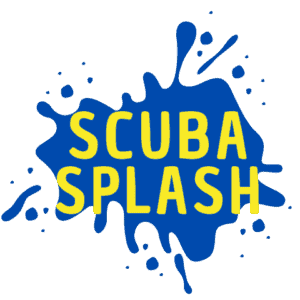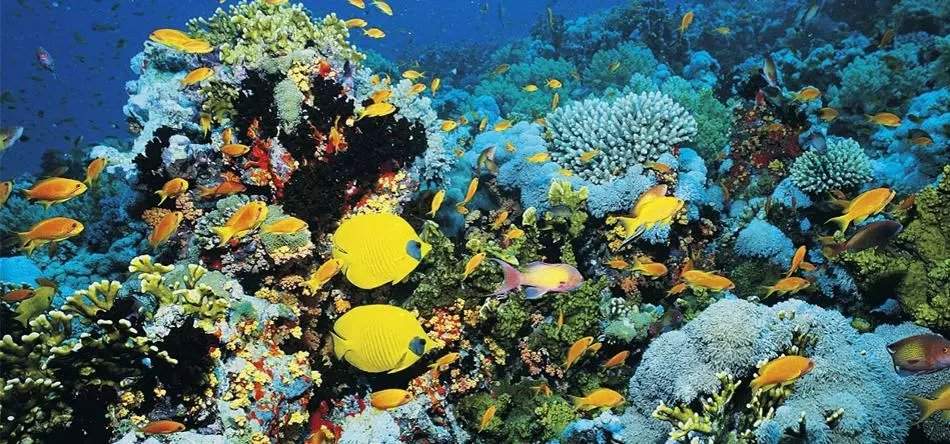Diving in coral reefs is arguably some of the best experiences a diver can have. The numerous types of coral along with their vibrant colors and shapes make them nothing short of awe-inspiring. In addition, coral reefs support a vast marine life from tiny anemones all the way up to sharks and whales.
Unfortunately, one-fifth of the world’s coral has died and threats continue to shadow the future of the coral reef. If you think you are powerless, you’re wrong. There are several ways to help preserve and combat coral damage. Purchase reef-safe sunscreen, don’t touch coral, and be mindful of personal contributions to pollution are the most powerful ways you can make an impact.
Coral reefs are known as the rainforests of the sea and support 25% of all marine species. They are the most diverse marine ecosystems on earth and are extremely fragile. Coral reefs are vulnerable to damage from fishing, diving, snorkeling, changing water temperatures, increased carbon dioxide, and pollutants.
Coral Reef Fast Facts:
- Coral reef can be dated back over 500 million years ago
- They provide shelter and food
- Less than 1% of the ocean floor is coral
- They support 25% of all marine species
- Since 1980, almost half of all coral reef has died
- There are two types of coral, soft and hard
- Coral cannot grow in water temperatures less than 64 F (18 C)
- Coral prevents coastal erosion
- Algae growing in the tissues of coral is what creates an array of colors
- Rising water temperatures cause stress, bleaching, illness, and death
What is Coral?
Coral reefs are ecosystems of polyps that take hundreds of years to build. These polyps live inside the coral and range in size from a pin-head to a tea saucer. Polyps are classified as animals rather than plants.
The oldest coral formation is the deep-water black coral at 4,270 years old. There are two primary categories of coral, hard and soft. Most corals prefer to grow in shallow waters that are warm. However, there are still some varieties that grow in deeper waters. Corals in deeper waters grow a lot slower than the ones in shallow water.
The polyps of both hard and soft coral look very similar. The main difference between them is that hard coral polyps have 6 tentacles and soft coral polyps have 8 tentacles.
Zooxanthellae is a type of algae that lives alongside many coral polyps. The presence of chlorophyll in the algae is what turns some corals green or brown. Coral that is colored pink, purple or blue has changed it’s color in response to sunlight, UV rays and water temperatures.
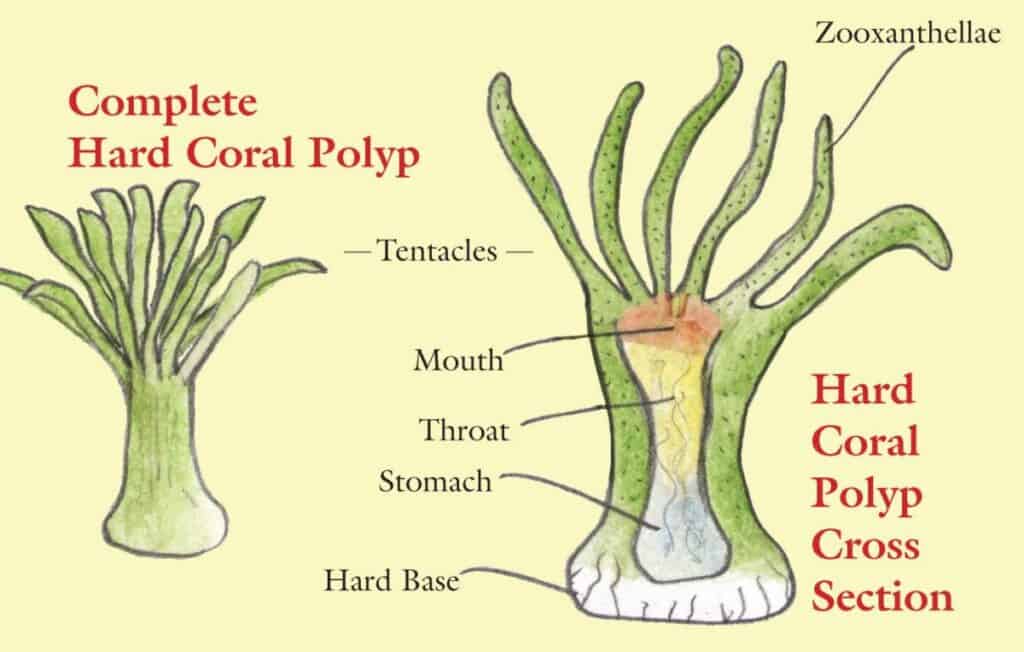
Hard Coral
Coral polyps build reef colonies out of calcium carbonate. The polyps live inside the hard exoskeleton and have long tentacles that grab food as it passes by. Since these formations are hundreds of years old the current polyps continue to build on the growth of their ancestors.
Hard coral feeds off an algae called zooxanthellae This algae live within the coral and converts sunlight into sugar to be used as energy. This energy is then shared with coral polyps as a source of food.

Coral polyps also come outside their skeletons at night to feed on plankton that floats by.
Depending on the species, hard coral can grow anywhere from 0.12 – 4 inches (.3-10 cm) per year. There are currently 3,000 known species of hard coral.
Soft Coral
Soft corals do not produce as much calcium carbonate which means they do not make a hard exoskeleton. Instead of forming reefs, soft coral form single structures which house many small polyps. The polyps are connected by tissue and have an almost translucent look.
Soft coral feed on water plants, algae, and bacteria. They also sometimes feed like hard coral using zooxanthellae algae as an energy source.
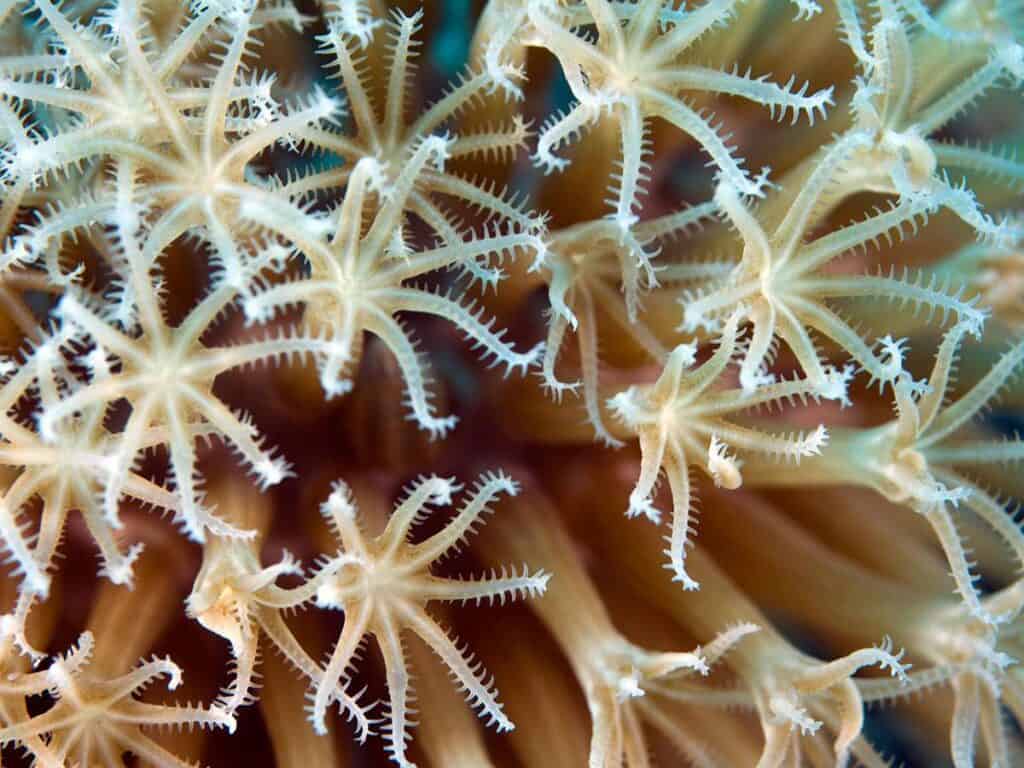
Since soft coral polyps live on the outside of the main structure they are exposed to predators. To deter attacks soft coral produce various chemicals to ward off potential danger. These chemicals also help deter other coral from invading their colonies.
There are 800 species of soft coral and they usually grow 0.79 – 1.6 inches (2-4 cm) each year depending on the species.
How to Preserve Coral
There are several things that you may be doing to harm coral without even knowing. Did you know that the sunscreen you put on before a dive could be harming coral? Or that being unaware of your surroundings and kicking coral with your fins is harmful? Let’s break down the 4 most common ways you can help keep coral thriving for the up and coming generations of divers.
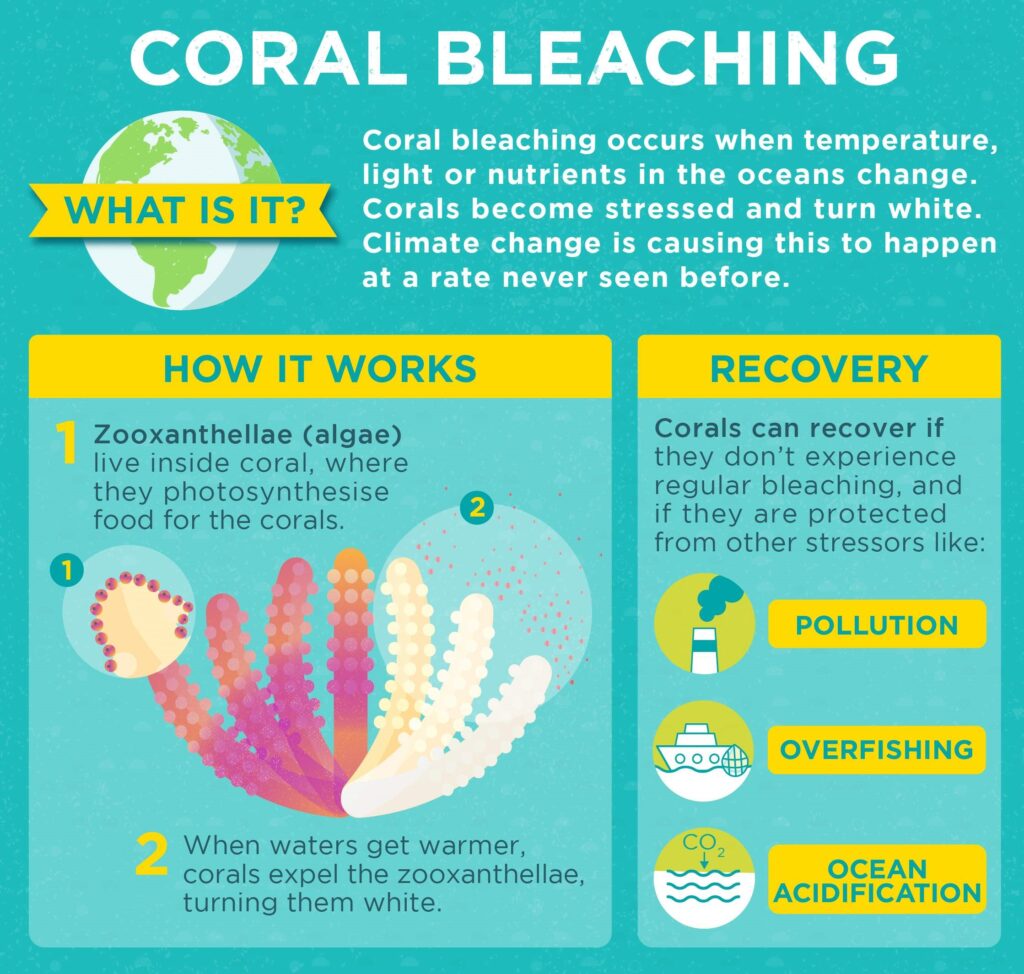
1.) Sunscreen
Normal sunscreens contain many several chemicals that can be harmful to coral. The worst one is called oxybenzone (BP-3) and it’s in a lot of other skincare products as well. Unfortunately, this is not the only chemical threatening coral. Some others include:
- benzophenone (BP-2)
- Nano Titanium Dioxide
- Nano Zinc Oxide
- 4-Methlybenzylidene
- OD-PABA (Para-aminobenzoic acid)
- 3-Benzylidene Camphor
- Butylparaben
- Octinoxate
- Octocrylene
Chemicals from sunscreens and other skincare products have been shown to bleach coral, damage DNA, cause abnormal growth, and create deformities in baby coral.
As the chemicals from sunscreen wash off your body and into the water they are then absorbed by coral. Coral cannot adapt to these foreign chemicals and this is when they start getting sick and die.
What’s worse, these chemicals do not only affect the coral reef. Sunscreen chemicals also:
- Reduce photosynthesis in green algae
- Decrease fertility in male fish and make female fish more masculine
- Cause defects in young mussels
- Reduce immunity, damage reproduction, and cause defects in sea urchins
You may think one person is not that big of a deal, and it may not be. However, each year an estimated 6,000-14,000 tons of sunscreen washes off our skin and enters the oceans. You have to admit, that’s a lot of sunscreens and a lot of potential for damage.
Purchase one that is reef safe such as Badger Balm, Reef Repair, Kokua Sun Care, Sun Bum, Raw Elements, Warrior, All Good.
Always read the ingredient labels when looking for reef-safe sunscreen. The terms “reef-safe” and “reef-friendly” are not regulated so you want to be sure none of the aforementioned chemicals are on the ingredients list. Many on the market will claim to be either reef-safe or reef-friendly but contain one or more harmful chemicals known to damage coral.
2.) No Touching
Coral is very delicate and susceptible to pathogens. To protect itself, coral is coated in a layer of mucus that contains a microbiome. This helps to ensure the reef continues to thrive. Touching coral transfers the oils from your skin to the coral which kills the protective mucus barrier.
This can not only leave coral vulnerable to pathogens but it can also provoke a stress response which leads to bleaching. The coral can recover if the occurrence is mild and temporary but not always.
It’s really tempting to want to touch coral with their unusual shapes and vibrant colors. Coral is fragile, very fragile. Divers can easily break off a large piece and hardly realize it. Divers are observers and should refrain from making contact with the reef. Plus, there is a type of coral called fire coral that will sting if touched. Trust me, you don’t want to feel that burn.
It’s also good to remember that the coral reef is not a free souvenir. Nothing in the ocean belongs to you and what may seem like an innocent act to you can be devastating to an entire ecosystem. If you need to take something from the ocean then stick to taking photos and trash.
Buoyancy control also plays a factor in preserving coral. I can’t tell you how many times I’ve seen new divers unknowingly kick coral with their fins or altogether crash into coral because they don’t have control of their buoyancy. If you are working on buoyancy then try to keep a safe distance from the reef until you feel more confident.
Always be mindful of your surroundings and practice distance awareness. The best advice I can give is to master the art of breathing and learn how to use it to rise up and over hills of coral. Practice this on your next dive even if you aren’t near coral. It’s a great skill to master.
If you dive on your own then it’s also important to anchor your boat away from coral. It’s actually illegal in most places to anchor above coral. Even if you are able to anchor on a sandy patch near a reef it’s still possible to get wrapped and snag a portion of the reef. Then there is the issue of retracting the anchor without getting it stuck or caught. The safest thing to do is to keep your distance and simply swim out to the reef.
3.) Pollution
Even if you never liter there is still a chance your daily habits are harming coral reefs. This includes personal hygiene and beauty products. There are far too many chemicals in skincare, soaps, shampoos, and makeup to even mention. Just one product can contain several hundred chemicals. It’s true that not all of them will harm the environment but there are many that can.
Chemicals enter the water systems as they are washed down the drain or improperly disposed of. Unfortunately, city filtration is not able to remove all chemicals from the water. This can result in contaminated water reaching oceans and building up to levels that harm reefs.
What Can You Do?
Look for products that are more natural or don’t contain reef harming chemicals such as:
- Oxybenzone (BP-3)
- Benzophenone (BP-2)
- Nano Titanium Dioxide
- Nano Zinc Oxide
- 4-Methlybenzylidene
- OD-PABA (Para-aminobenzoic acid)
- 3-Benzylidene Camphor
- Butylparaben
- Octinoxate
- Octocrylene
I should mention that chemical pollutants in water systems and bodies of water have longer reaching effects than damaging coral. These chemicals also harm marine life. They decrease fish fertility and reproduction, cause defects in young mussels, hinder growth and photosynthesis in algae, decrease immunity and reproduction in sea urchins, just to name a few.
As a diver, we appreciate and value marine life of all kinds. We should be aware of how simple actions can stretch and create a whirlpool of destruction.
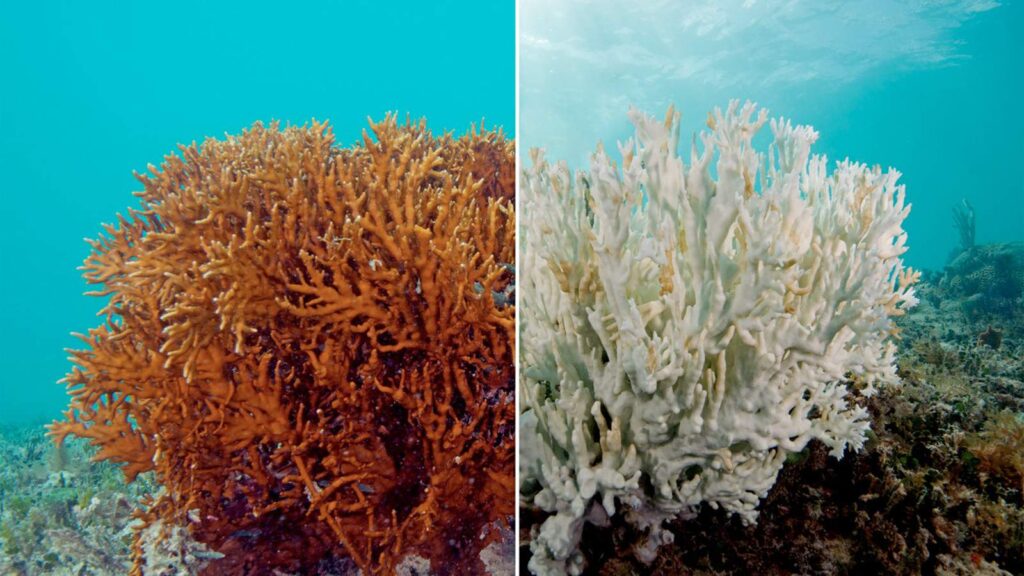
Right: Coral bleaching
4.) Carbon Footprint
Carbon dioxide is not actually classified as a pollutant but it has a huge effect on the health and wellbeing of coral reef.
Oceans absorb roughly 30% of the carbon dioxide in the atmosphere. This increases the acidic levels and lowers the pH of oceans. This process is called ocean acidification (OA).
What does this mean exactly?
Coral, especially hard coral, are highly sensitive to the pH balance of the oceans. They are so sensitive, in fact, that they require near perfect conditions to thrive. Waters that are too acidic make it difficult for coral to grow and build.
Coral reefs use a mineral found in the ocean called calcium carbonate to build and reproduce. The more acidic the ocean is the less calcium carbonate is available. This mineral is essential and without it coral will erode and deteriorate and rapid speeds.
How can you help?
- Reduce or eliminate harsh household or lawn chemicals
- Never dump chemicals into storm drains
- Switch to energy-efficient appliances and lightbulbs
- Carpool/ reduce driving when possible
- Recycle and reduce single-use waste
- Eat sustainably sourced seafood
- Be mindful of water consumption
- Use non-toxic dish soap
- Reduce meat consumption
- Eat and buy local produce that’s in season
- Volunteer for local clean-ups
Don’t get overwhelmed. This is a wide spectrum of how you can make a difference. Pick one or pick a few things that you can do to help reduce carbon dioxide emissions. Every little bit helps and one person truly does make a difference.
What other ways can you make a difference in the health of coral reef? Think, apply, and share your ideas today.
